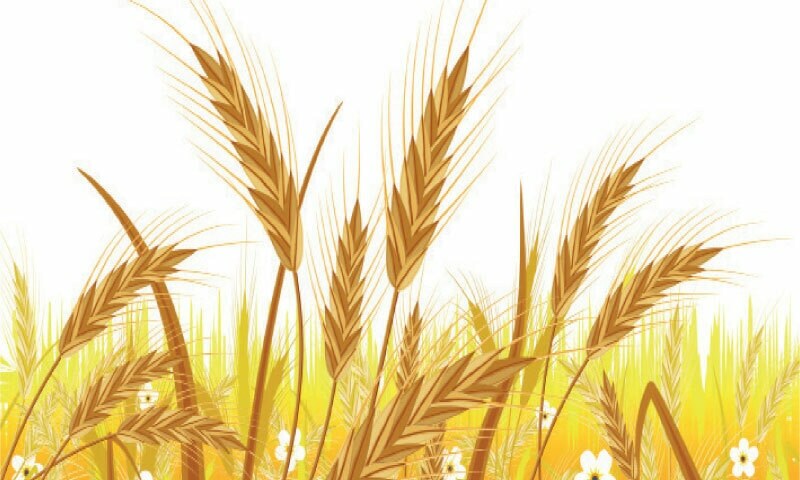With March ending relatively cool (average temperature according to meteorological officials recorded at 27.6°C), wheat crops might have had the chance to recover from earlier losses caused by smog at the tillering stage in November, loss of acreage and a long dry spell early this year.
At least farmers and Punjab’s agriculture officials are hopeful, though at varying levels. Apart from a cooler March, the agriculture bureaucracy in the province also counts positive policy impacts of initiatives like subsidised solarisation of tubewells, Kissan and Livestock Cards, distribution of laser-levellers and e-credit for a better, if not bumper, crop.
Based on these factors, they hope wheat will cross 21 million tonnes.
Alas, these hopes are not without critique by those who base their case on the massive loss of acreage — 16.25m acres this year against 17.44m acres last year. Official average yields were recorded at 34.74 maunds per acre a year ago. There is no way the crop can even come close to that average rate this year; the long dry spell has largely ruined the crop in 2m acres of rain-fed areas.
Wheat crop size and price remain up in the air owing to weathering challenges, loss of acreage and the end of provincial procurement
In the plains of the province, long dry spells, followed by rains, heavy hail and thunderstorms, hit three central districts during March; all these negative factors would take a toll on the crop, but by how much? The next few weeks will make things clear, and for now, the parties insist: “Let’s keep our fingers crossed before crowing self-serving rhetoric.”
However, both sides agree on one point: “A cooler March must have helped wheat, which, otherwise, could have been a disaster.” They also agree that the next two to three weeks would quantify the feared losses, recovery and crop size. Both sides share a common fear as well: “The country is entering yet another wet spell. If it prolongs or keeps the early part of April cooler, crop maturity will be delayed and inflict wounds on the final yield figure.
Weather, fasting and the arrival of Eid have already delayed the Sindh harvest, putting additional pressure on supply from Punjab. If the Punjab harvest is late as well, the market may take a spin.“
Whereas the crop size is somewhat “uncertainly certain” in Punjab, the marketing side is chock full of uncertainties this year. A year ago, Punjab backed off at the last moment from the long-anticipated wheat procurement and created chaos in the market, letting it adjust itself at the cost of the farmers. This year, for the first time, it has a declared policy of “no official purchase” and will be joined by the second biggest purchaser, Sindh. With both provinces out of the procurement drive, the entire tradable surplus would either be absorbed by the millers or the stockists.
In the absence of hundreds of billions of rupees, with which the Food Departments of Punjab and Sindh had been entering the market and stabilising prices on the higher side from the beginning, the behaviour of the market, ruled by the millers or hoarders, would, most probably, be anti-farmer; the hoarders and millers would wait for the price crash before they stepped in.
Furthermore, there are almost no chances of export, as wheat prices in Pakistan, even at this current, much-reduced level, are higher in the region and the world. Thus, the entire crop would be stuck within Pakistan and up for grabs by those who want to make a windfall.
On the positive side, the millers, who used to purchase six months of stock because wheat was coming from official stocks from September onwards, now have to spend the entire year grinding wheat and keeping it as well. The millers used to purchase 1.5-2m tonnes. This year, they would need at least double that quantity, if not more, for contingencies. This creates an opportunity for the government to push millers into the market by facilitating them at a fraction of the cost it used to bear in Food Department operations.
This can offer millers some relief on bank markups for purchases, especially for the early ones. It can link interest rates with the time of purchase and push the millers into the market early to stabilise it at a reasonable level.
To clarify the point through an example, the government can divide the historical 50-day drive into three parts: the first fortnight, the second and the third. It can offer a certain markup rate reduction for the first 15 days and progressively reduce the rate for the second and third fortnight. By doing so, it would push millers into the drive from day one and help stabilise the market throughout the traditional procurement drive.
Since purchases by the millers are part of the official record, because they are one of the most organised stakeholders, second only to the provincial food departments, any subsequent manipulation would be easy to track down and rectify.
Smaller farmers are always early sellers. Since they are massive in numbers, they also hue and cry at very high decibels. If they are taken care of at the earlier stage, the chances of market stabilisation could brighten up for the rest of the drive. Bigger farmers also have some holding capacity and can wait for price recovery in case of a crash. It is the smaller ones who need, and demand, help at the early stages.
This year, since the most organised players — the provincial governments — are opting out, they should ensure some kind of replacement is in place; the millers could be one and must be pushed into playing their role and be reasonably facilitated.
Published in Dawn, The Business and Finance Weekly, March 31st, 2025


